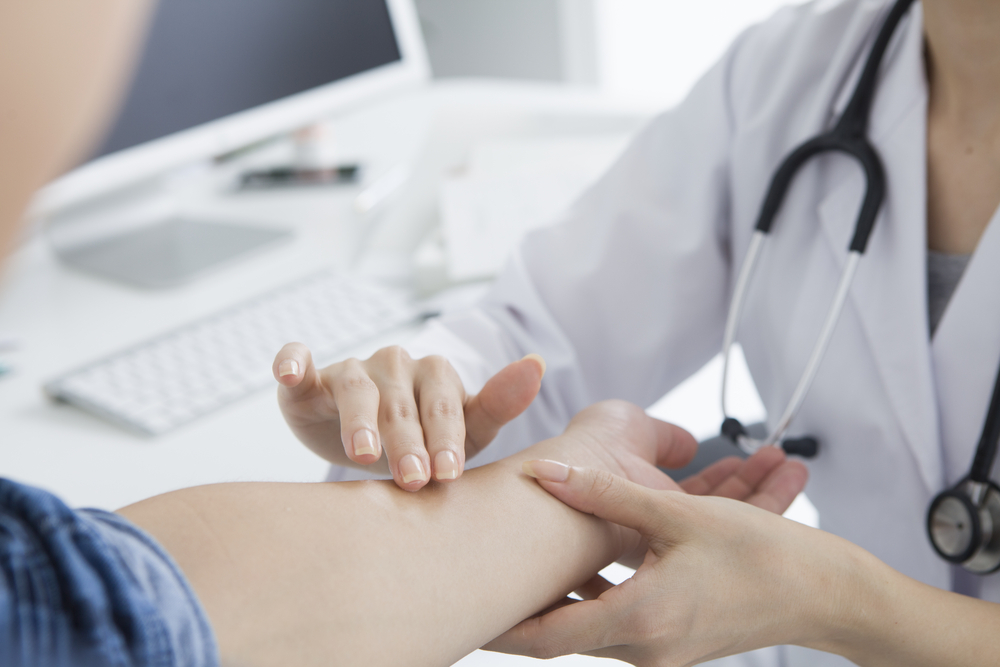Diacerein Cream Shows Promise in Reducing Blisters in EBS Patients, Trial Shows
Written by |

A Phase 2/3 clinical trial testing diacerein in the form of a cream applied to the skin showed that it could significantly reduce the number of blisters in patients with epidermolysis bullosa simplex (EBS). No treatment-related adverse events were reported.
The results of the small Austrian trial were published in the Journal of the American Academy of Dermatology, in an article titled “Diacerein Orphan Drug Development for Epidermolysis Bullosa Simplex: A Phase 2/3 Randomized, Placebo-Controlled, Double-Blind Clinical Trial.”
Diacerein is a component of the rhubarb root, and was reported to block the release of active IL-1b — a naturally occurring factor that stimulates the immune system.
Although this kind of treatment does not correct the genetic defects associated with epidermolysis bullosa, it can reduce disease symptoms, increasing the patient’s quality of life.
The Phase 2/3 crossover clinical trial (DRKS00005412) enrolled 15 patients ages 4-19 with EBS. The trial was conducted in Austria.
Participants received diacerein 1% topical cream or a placebo for four weeks, and were followed up for three months. Neither group received any treatment for 5.6 months. The treatments were then reversed, and the first group received the placebo and the second group received diacerein. The same protocol was followed.
The primary endpoint of the trial was a reduction in blisters by more than 40%, a goal that was met in the study.
The number of blisters dropped by more than 40% in 14% of all patients in the placebo group and in 86% of patients in the diacerein group after four weeks of treatment.
When all the results were analyzed, treatment with diacerein 1% was found to be associated with an average 60% reduction in blistering after four weeks.
The effects of the diacerein treatment appeared to continue to act in the three-month follow-up period, when no treatment was applied.
One patient in the diacerein group (12.5%), compared to 67% of patients in the placebo group, had a similar number of blisters after the trial as they had before treatment began.
There were 13 adverse events reported, but none were classified as related to the treatment, nor did they lead to a reduction in dose or cause disruption or termination of anyone’s participation in the study.
“In this study we confirmed superiority of a 1% diacerein cream over placebo in reducing blister numbers of patients with EBS,” researchers wrote. “A significant response was observed within the four weeks treatment with good persistence throughout the [three] months follow-up.”
Currently, a Phase 2 clinical trial (NCT03154333) is being conducted by New Jersey-based Castle Creek Pharma. It is enrolling participants to evaluate the safety and efficacy of diacerein 1% for the treatment of EBS.
This randomized, double-blind study, known as the DELIVERS trial, is being conducted at research sites in the U.S., Europe, Israel and Australia, and expects to enroll about 80 participants who have a confirmed diagnosis of EBS. For more information, visit the clinical trial webpage here.





